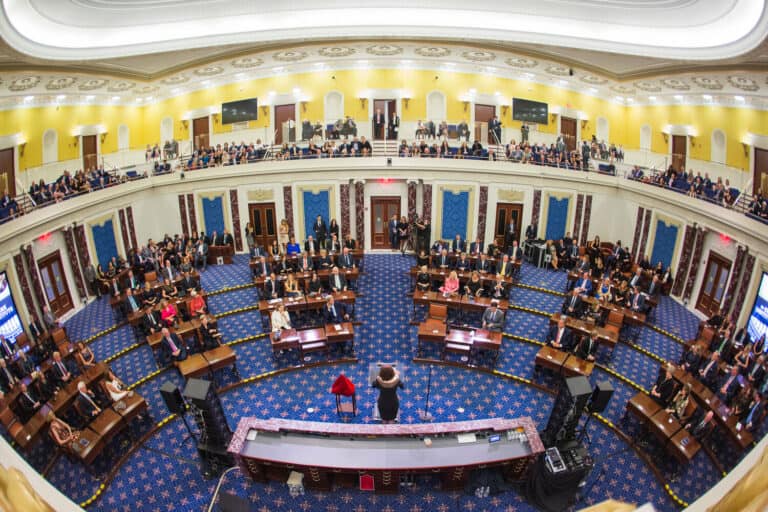
Gilbert Placeres is a student at Harvard Law School.
In today’s News & Commentary, recalling the Red Scare today and thinking about how to best organize Amazon’s distribution system, while it lays off 4,700 in Quebec to avoid a contract.
In the context of President Trump’s attacks on the federal workforce, Clay Risen writes in Politico about the last time there was a political purging of the bureaucracy. Senator Joseph McCarthy’s anti-communist campaign during the Cold War led to President Dwight Eisenhower firing 1,456 federal employees and investigating many more, especially in the State Department. President Harry Truman and his FBI had done similarly prior, labeling certain organizations as “subversive” and investigate those with any ties. The tide eventually turned against the Red Scare, in part because of Supreme Court limits and reporting from widely trusted journalist Edward Murrow. However, Risen notes that the test of loyalty then was framed as towards the United States, while now it is framed as towards President Trump himself.
Late last year, Professor Ben Fong argued union organizing at Amazon should focus on its Sortation Centers, which serve to organize packages into local delivery areas. In response, Amazon warehouse worker and union activist Paul Blundell argues that while Sortation Centers are important choke points in Amazon’s distribution system, they are not optimal organizing targets. Sortation Centers are relatively easy to close and replace and rely on almost entirely part-time, high-turnover, and fractured-shift employees, posing hurdles to unionization. Blundell instead recommends considering Inbound Cross-Dock facilities, where shipping containers and pallets from suppliers are broken down and sent to regional distribution centers for storage and packaging, because of Amazon’s massive imports and fast cycling of inventory.
Speaking of Amazon’s distribution system, as part of a decision Esther previously reported on, it has started closing all seven of its warehouses in Quebec in a likely effort to avoid signing a labor contract. Its warehousing and delivery in the province will now be handled by third-party contractors. 4,700 workers are being laid off in the closings of the seven warehouses, including 230 at the first Amazon facility in Canada to unionize, in May of last year. The contract talks for that union were stagnant, and the mediator told the parties that absent progress they would be referred to binding arbitration. The Confédération des syndicats nationaux (Federation of National Unions, CSN) has launched a nationwide boycott of Amazon in response and will be bringing legal action claiming violations of organizing protections. The City of Montreal has announced it will stop ordering from Amazon.
In The Hill, Aron Salomon suggests the Quebec Amazon closings highlight the risk Amazon will respond similarly to unionization success in the US and the need for international solidarity.






Daily News & Commentary
Start your day with our roundup of the latest labor developments. See all
October 29
9th Circuit rejects challenge to NLRB's constitutional structure; preemption challenges to state labor peace statutes
October 28
Two federal unions oppose CBA cancellations, another federal union urges Democrats to end the government shut down, and Paramount plans for mass layoffs
October 27
GM and Rivian announce layoffs; Boeing workers reject contract offer.
October 26
California labor unions back Proposition 50; Harvard University officials challenge a union rally; and workers at Boeing prepare to vote on the company’s fifth contract proposal.
October 24
Amazon Labor Union intervenes in NYS PERB lawsuit; a union engages in shareholder activism; and Meta lays off hundreds of risk auditing workers.
October 23
Ninth Circuit reaffirms Thryv remedies; unions oppose Elon Musk pay package; more federal workers protected from shutdown-related layoffs.